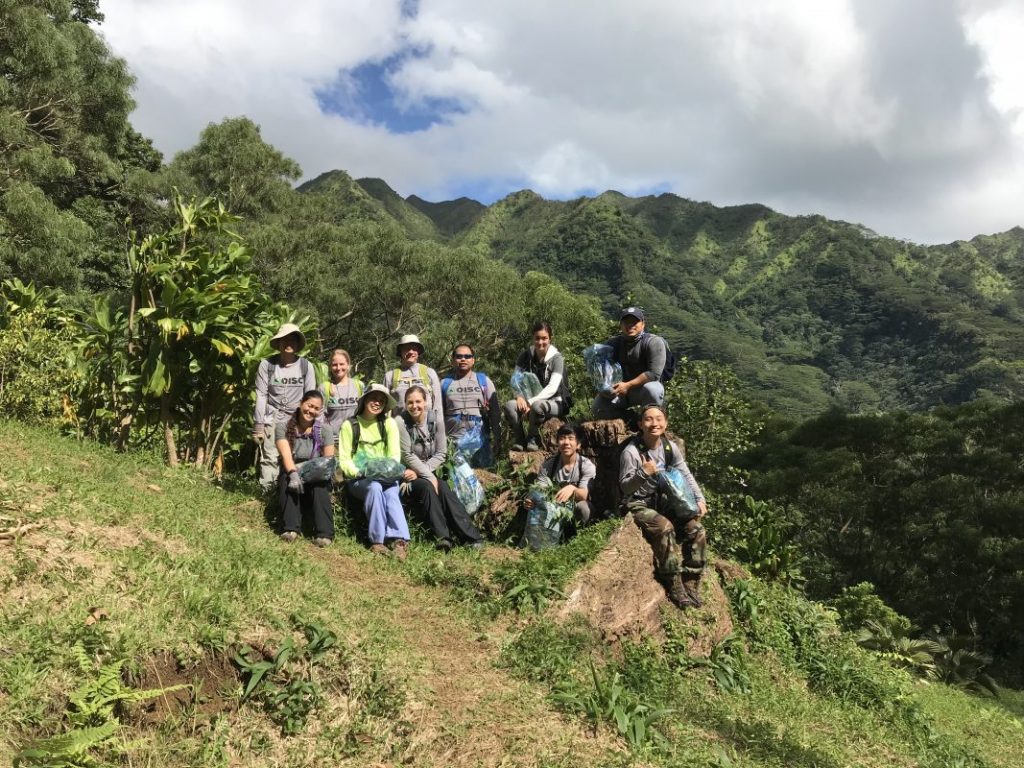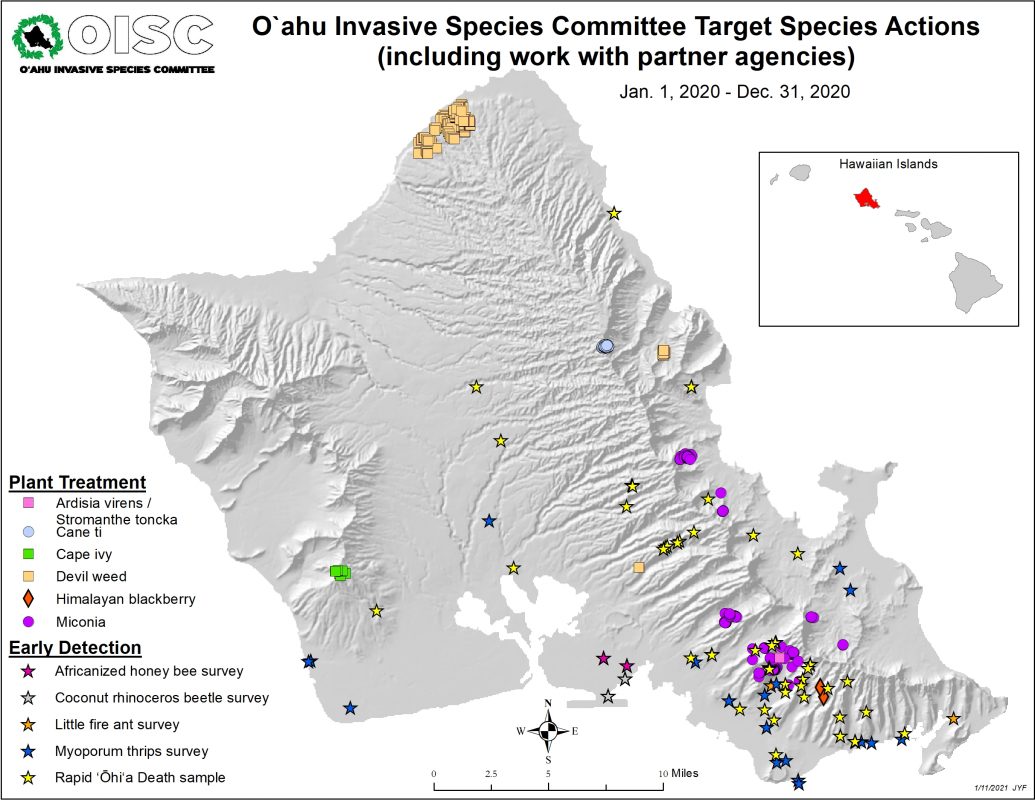OISC’s Mission…
- Protect O‘ahu’s native ecosystems, agriculture production and the public’s quality of life.
- Eradicate incipient invasive species and contain high impact invaders.
- Educate and involve the public to help stop the spread of invasive species.

OISC’s Beginnings…
In 1991, a local biologist traveled to Tahiti and saw the damage Miconia calvescens was doing to the forests there. Upon returning home, she spotted it in Hāna, Maui and the call to remove miconia was soon sent around the state. At the same time, the spread of fountain grass on O‘ahu was concerning local conservationists since it was beginning to replace koa forests on the Big Island and increase the frequency and destructiveness of brush fires there.
Employees from the Hawai‘i Department of Agriculture (HDOA), the Hawai‘i Department of Land and Natural Resources (DLNR), the Board of Water Supply and the O‘ahu Army Natural Resources Program, Lyon Arboretum and volunteers from the Hawai‘i Trail and Mountain Club and the Sierra Club conducted surveys and control work for both Miconia and fountain grass. Volunteers did much of the work. HDOA and DLNR visited nurseries, botanical gardens and private homes where Miconia calvescens was being grown. Happily, everyone that was asked to remove their miconia tree did so and all miconia trees on O‘ahu were taken out of cultivation before OISC was even formed. This has given us a great head start on the control program.
In 2001, money to hire permanent staff became available and the original volunteers became the OISC oversight committee. OISC began with three employees and a lot of volunteer help. Now, we employ between 14-16 people, manage a suite of invasive species, and conduct early detection work to prevent new species from establishing.
OISC fills an important function in invasive species management. OISC surveys for and removes invasive species before they move into intact native forests and begin to cause damage. Although the crew spends most of their time in the lower-altitude, highly disturbed forests of O‘ahu, we are able to protect vast areas of native forest with few resources. OISC works island-wide on private and public property, wherever our target invasive species are found. It is through the support and cooperation of landowners and the public that OISC can fulfill our mission to protect our forested watersheds.

